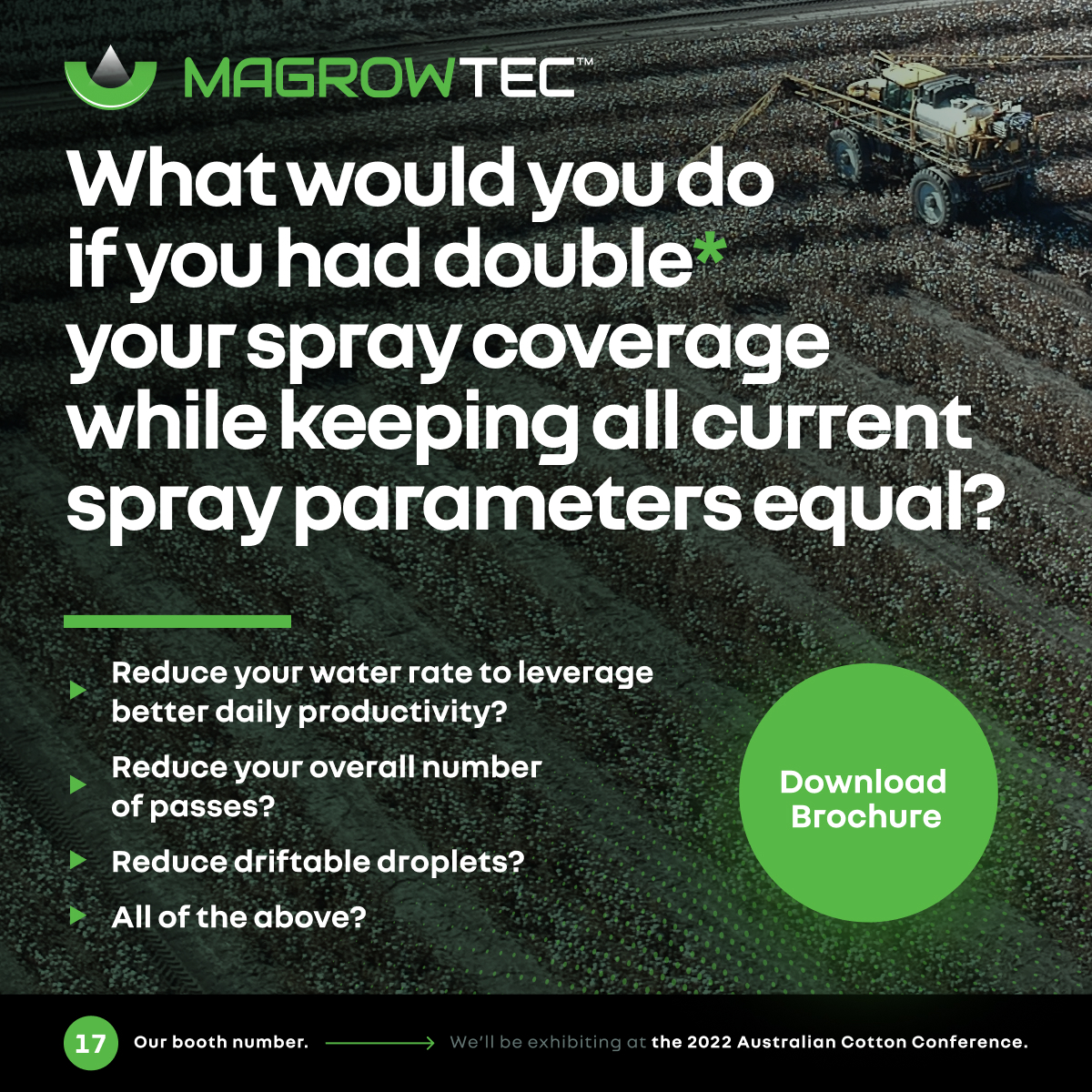John Seely
Video Overview
When Brian Smith of Vantage South approached Mississippi cotton and soybean farmer John Seely about running a sprayer field test with a new product from MagGrow, Seely was eager to see if it could help him reduce his high chemical costs. During his years of farming, Seely had seen input prices go up but never really come down.
“We try to watch every dime we spend on chemicals,” he notes.
They ran the test using two identical sprayers, one spraying the conventional way and the other outfitted with the MagGrow system, which was designed to create more optimal sized droplets that hit the target with better coverage.
“MagGrow’s claim of less water, less chemical, less drift, and better coverage was a pretty substantial claim,” says Seely.
On the test plot, the team applied 100% rate for both the conventional sprayer, as well as the one equipped with the MagGrow system. Then they dropped the MagGrow sprayer to a 75% rate and a 50% rate. Seely saw no difference among any of the test strips.
“That’s pretty amazing,” says Seely. “It can save the farmer a tremendous amount of money.”
Drift was definitely better, too. “With MagGrow, the chemical falls down into the canopy instead of rolling out behind the sprayer,” says Seely. “I happened to be at the edge of the field when the sprayer made a turn. Usually the sprayer would get droplets on my truck, but there was nothing.”
Seely also observed more droplets under the leaves than he had seen with conventional spraying, which meant a better coverage, especially for insecticides. “A lot of our worm materials are very expensive, and if you can’t penetrate the canopy they’re not doing any good.”
Seely says the MagGrow system was an investment, but it paid for itself in no time.
“You can cut your water back from 20 gallons to 15, cut your chemicals by 25%, and still be effective. Potentially, spraying 10 gallons at half rate might be doing a better job than a conventional sprayer at 20 gallons,” he points out. “Not only herbicides but insecticides, too. I think we’ve made 6 plant bug applications this year, so if we cut that in half, that’s a tremendous amount of money we can save. When we go over a crop and can potentially save $50-$60 an acre, that ends up being a lot of money.”
 Back To Overview
Back To Overview
 Share
Share